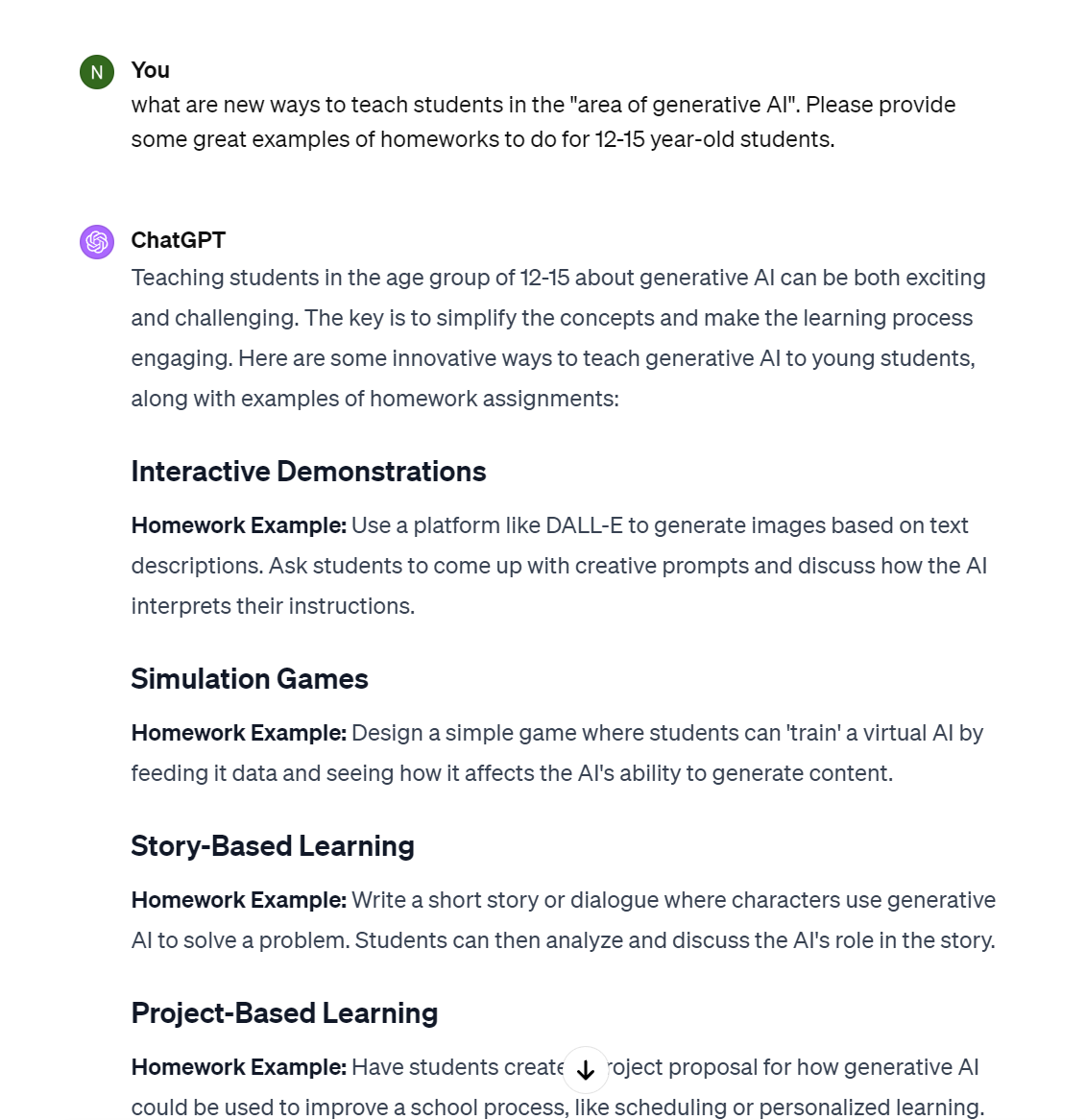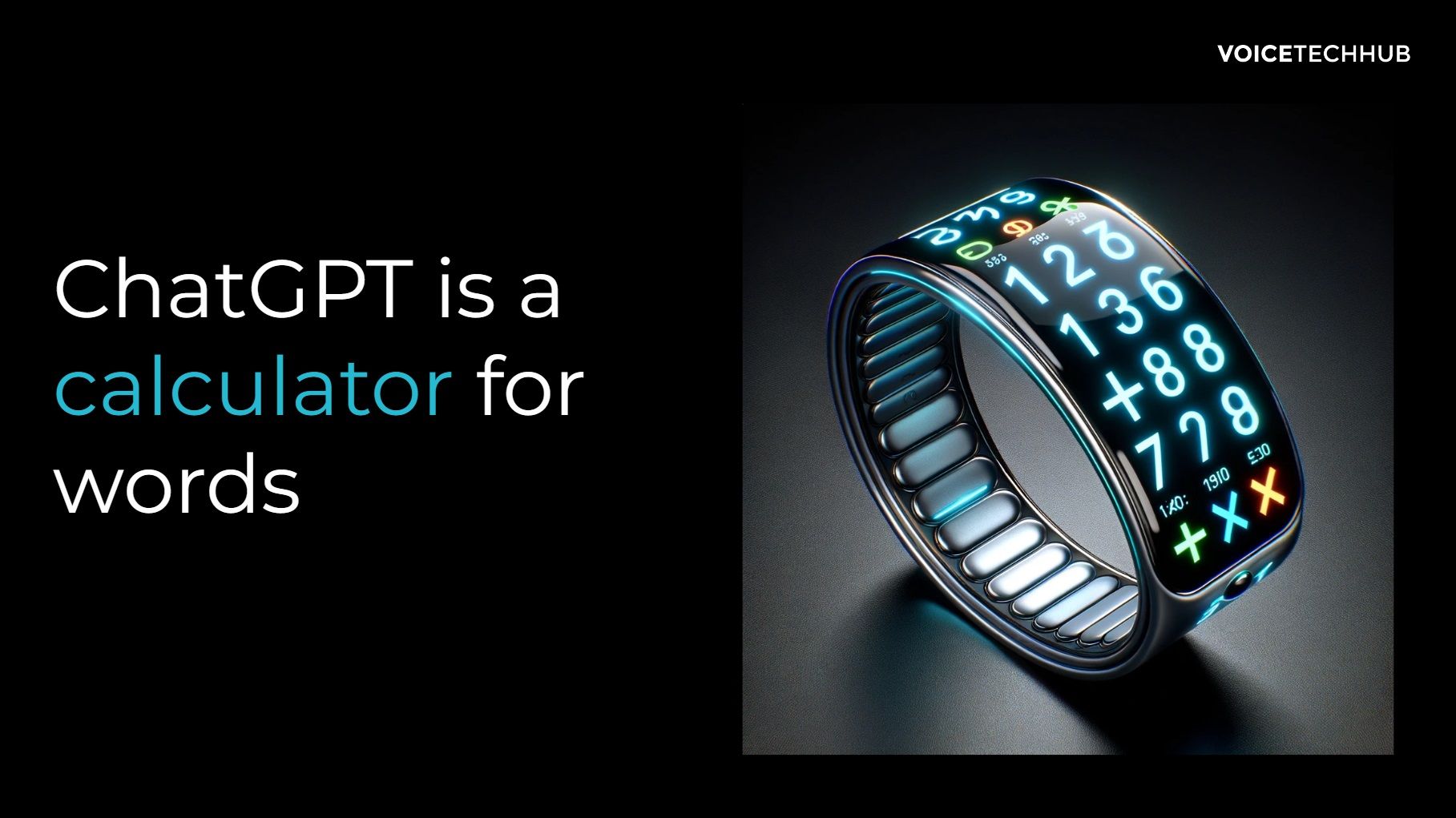How Schools and Universities can use Generative AI
This article outlines how schools and universities shall approach the recent generative AI developments.
Why educational institutions are hit by Generative AI?
Many schools and also universities are confronted with students using Generative AI tools like ChatGPT. However, often regulations and rules are not available yet or are in an implementation phase. It is a fact that students cannot be controlled when it comes to using ChatGPT. Some might even already know more than their parents or teachers when it comes to ChatGPT.
Secondly, universities are disrupted by a technology which makes knowledge available. Harvard started building their own Generative AI tutors, avatars emerge in the fields of teaching that can significantly reduce costs and scale online trainings faster.
The World Economic Forum event writes about "Why AI makes traditional education models obsolete"

Create creative tasks for students with the help of Generative AI tool ChatGPT.
How Generative AI can be used by teachers?
Generative AI can be used for different tasks:
1) Analyse student's work: Tools like AI-based grammar and style checkers can help students improve their writing.
2) Content: Generate homework for the students
3) Creativity: Explore new ways of learning + executing homework. See how we prompted ChatGPT to create new ways of homework above.
4) Examination/Grading: AI can grade objective assignments like multiple-choice tests, allowing teachers to spend more time on qualitative feedback.
We experience in our AI trainings that we create a very new way of learning. Rather than focussing on traditional topics (e.g. French, programming, art) students will focus on a real-world project work and execute this with the help of AI. This may again include several "classical" skillsets needed (e.g. translate in French, program a code, design a nice picture for the website with DALL E).
Will ChatGPT replace exams and essays at schools?
There will be a trend towards more experiential assignments based on real-world challenges as described above. Students will learn to embrace changes aand solve a real problem.
WEF refers to a "durable skills-based model" which is better positioned in an AI era:
- "Resilient to mindless AI use: Active learning techniques (debates, role-play and discussions) are dynamic, social and fast paced, requiring students to show up and interact, as well as creatively and critically “think on their feet”. Authentic and experiential assignments connected to real-world issues also require them to apply their specific skills to address a specific contemporary challenge faced by a specific (local) partner. AI may be able to provide inspiration and suggestions but not be mindlessly used to solve such problems.
- Cultivates skills AI lacks: AI tools may be impressive, but they still lack genuine creativity, ethical reasoning, emotional intelligence and the ability to work, lead and negotiate with others. By explicitly training students on such skills we ensure they can do what AI cannot. And by training them on still other skills (such as critical thinking), we ensure that they can effectively and ethically use AI as well as critically evaluate its output."
Should schools allow the usage of AI tools and ChatGPT?
It is essential for students to learn about AI tools like ChatGPT and the underlying technology of large language models (LLMs). Those who can utilize AI effectively will have an advantage over those who cannot. Banning such tools could be detrimental to the future of many people as it is expected to be able to work with these tools (as it is in 2022 expected to know how to build a website or google, literally be digital knowledgeable today).
Providing access to learning materials in an equal and inclusive manner is important for the future of humanity.
Is ChatGPT compromising common sense?
It is important to teach students about the fact that ChatGPT and large language models are "calculators for words" and that the better users of such Gen. AI tools are subject manner experts (e.g. in programming or writing), the better they are able to judge the output of such models. Common sense and critical thinking are key elements hat is emphasized in a school or education context. This can be done by integrating ChatGPT and information literacy actively into your lessons.
Practical Exercise in the class: Let students search for the original sources of the mentioned information in a generated text by teachers. Very importantly: discuss the solutions delivered by AI. Do it iteratively: Discuss and question the answers given by the AI together with the class.
Should schools and universities use AI detectors?
A recent Stanford study showed that detecting AI generated text is a very hard task and that detectors are not reliable:
1) Seven AI detectors flagged 20% TOEFL essays as "AI generated" although they were not.
2) AI detectors are "near-perfect” in evaluating essays written by U.S.-born eighth-graders.
3) They can be gamed as many llms can be prompt engineered to make the text more lexical rich in the answers. This cannot be detected yet.
Despite these facts,
there are numerous tools
available in the market, particularly for addressing fake news:
- Fact-Checking Websites: Websites like Snopes, FactCheck.org, and PolitiFact are dedicated to verifying stories and claims.
- Media Literacy Tools: Tools like NewsGuard provide browser extensions that rate the credibility of news sites.
- AI-Based Tools: AI systems like OpenAI's GPT-3 have been used to develop tools that analyze news for authenticity.
- Reverse Image Search: Services like Google Reverse Image Search can verify the source and context of images.
- Educational Platforms: Websites like Checkology offer courses to teach users how to identify misinformation.
- Social Media Verification: Some social media platforms have their own fact-checking and content review systems.
It's important to use a combination of these tools and to also rely on critical thinking and cross-referencing with reputable sources for the best results in detecting AI generated or fake news. This will become more and more difficult as AI contents fill the internet.

Source: Generative AI in Leadership Training, Isabell Welpe. Image: created with DALLE 3
What are the risks of Generative AI for society that need to be taught at schools?
While ChatGPT may be enticing to utilize, it is important for teachers and students to be aware of the potential risks involved. ChatGPT acts like a "word calculator" and is not primarily designed to solve math problems, which means it still can provide incorrect answers. Thus, it is important to develop critical thinking skills at schools.
Since LLMs predict the next likely word based on an understanding of the preceding sentences, they can still convey incorrect information that might appear plausible at first glance.
Address Fake news: it is an issue that must be addressed during lessons. Additionally, fictitious influencers - AI assistants designed to accumulate followers and provide entertainment - already exist. It is essential to inform students, parents, and relatives about the presence of virtual assistants on phone calls and social media platforms.
The state of Gen. AI Governance in education
Fewer than 10% of schools (n =450) and universities currently have formal guidelines on AI according to
UNESCO. Its new guidance suggests eight specific measures educational institutions could adopt to ensure “quality education, social equity and inclusion". This full
guideline can be downloaded here.
Do you need support with Generative AI trainings in your class or school?
We are here to support you: contact us today.
Need support with your Generative AI Strategy and Implementation?
🚀 AI Strategy, business and tech support
🚀 ChatGPT, Generative AI & Conversational AI (Chatbot)
🚀 Support with AI product development
🚀 AI Tools and Automation















